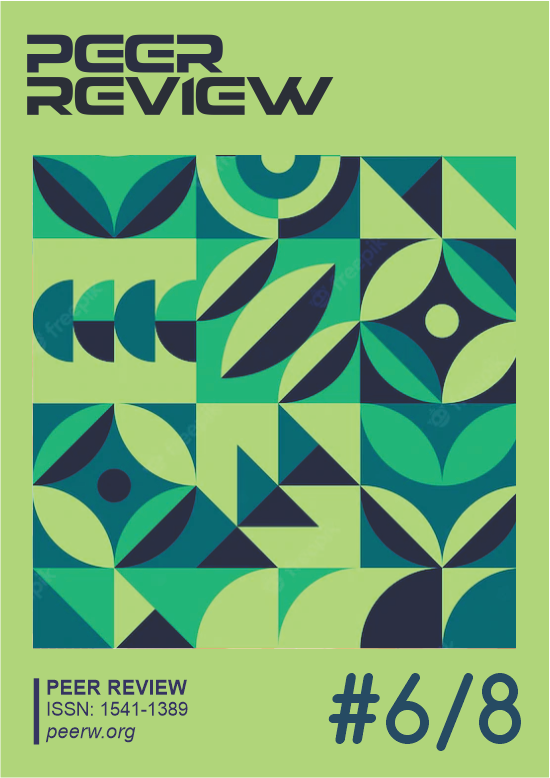Um estudo comparativo de algoritmos de aprendizado de máquina para classificação de tráfego em redes definidas por software
DOI:
https://doi.org/10.53660/PRW-2089-3821Palavras-chave:
Aprendizado de máquina, Redes Definidas por Software, Classificação de TráfegoResumo
As Redes Definidas por Software pode viabilizar o desenvolvimento de técnicas para melhorar o desempenho das redes IP com relação à segurança, qualidade de serviço e engenharia de tráfego. Este trabalho realizou um estudo comparativo de classificação de tráfego em duas topologias SDN utilizando redes neurais artificiais do tipo Multilayer Perceptron, Máquinas de Vetores de Suporte, Naive Bayes, K-Nearest Neighbor, Random Forest e o Ensemble. O desempenho dos classificadores foi avaliado através das métricas acurácia, precisão, revocação e f1-score. Foi realizada uma análise estatística através da aplicação do teste de Friedman e do teste post-hoc de Conover sobre os resultados obtidos pelos algorítmos classificadores. O Random Forest obteve o melhor resultado.
Downloads
Referências
AMARAL, P., DINIS, J., PINTO, P., BERNARDO, L., TAVARES, J., & MAMEDE, H. Machine learning in software defined networks: Data collection and traffic classification. IEEE International Conference on Network Protocols, 2016.
BADHANI, S., & MUTTOO, S. Cendroid—a cluster-ensemble classifier for detecting malicious android applications. Computers Security, 85, pp. 25–40, 2019.
BAKKER, J., NG, B., SEAH, W., & PEKAR, A. Traffic classification with machine learning in a live network. IFIP/IEEE Symposium on Integrated Network and Service Management (IM), pp. 488–493, 2019.
BISOL, R., SILVA, A., MACHADO, C., GRANVILLE, L., & SCHAEFFER-FILHO, A. Coleta e análise de características de fluxo para classificação de tráfego em redes definidas por software. XXXIV Simpósio Brasileiro de Redes de Computadores e Sistemas Distribuídos, 2016.
BOSER, B., GUYON, I., & VAPNIK, V. A training algorithm for optimal margin classifiers. Annual Workshop on Computational Learning Theory (COLT’92) , pp. 144–152, 1992.
BOTTA, A., DAINOTTI, A., & PESCAPÉ, A. A tool for the generation of realistic network workload for emerging networking scenarios. Computer Networks, 56(15), pp. 3531–3547, 2012
BUŽIC, D., & DOBŠA, J. Lyrics classification using naive bayes. International Convention on Information and Communication Technology, Electronics and Microelectronics (MIPRO), pp. 1011–1015, 2018.
CARDOSO, W. S., SILVA, F., ROCHA, U., & SOUSA, M. Implantação de um patch panel virtual utilizando redes definidas por software. Anais Estendidos do XXIII Simpósio Brasileiro de Sistemas Multimídia e Web, pp. 95–98, 2017.
CHOMBOON, K., CHUJAI, P., TEERARASSAMMEE, P., KERDPRASOP, K., & KERDPRASOP, N. An empirical study of distance metrics for k-nearest neighbor algorithm. International Conference on Industrial Application Engineering, pp. 280–285, 2015.
DING, L., YU, F., PENG, S., & XU, C. A classification algorithm for network traffic based on improved support vector machine. Journal of Computers, 8, 2013
EDLA, D., MANGALOREKAR, K., DHAVALIKAR, G., & DODIA, S. Classification of eeg data for human mental state analysis using random forest classifier. International Conference on Computational Intelligence and Data Science, 132, pp. 1523–1532, 2018.
FAN, Z., & LIU, R. Investigation of machine learning based network traffic classification. International Symposium on Wireless Communication Systems (ISWCS), pp. 1–6, 2017.
FARHADY, H., LEE, H., & NAKAO, A. Software-defined networking: A survey. Computer Networks, 81, pp. 79–95, 2015.
FERREIRA, F. R. O uso de rede neural artificial mlp na predição de estruturas secundárias de proteínas. Dissertação de mestrado, Universidade Estadual Paulista, Instituto de Biociências, Letras e Ciências Exatas, São José do Rio Preto, 2004.
FIRMINO, M. Testes de hipóteses: uma abordagem não paramétrica. Dissertação de mestrado, Universidade de Lisboa, Faculdade de Ciências, Departamento de Estatística e Investigação Operacional, 2015.
GANDHI, I., & PANDEY, M. Hybrid ensemble of classifiers using voting. International Conference on Green Computing and Internet of Things (ICGCIoT), pp. 399–404, 2015.
GARCÍA-PEDRAJAS, N., ROMERO DEL CASTILLO, J., & CERRUELA-GARCÍA, G. A proposal for local k values for k -nearest neighbor rule. IEEE Transactions on Neural Networks and Learning Systems, 28(2), pp. 470–475, 2017.
JEDARI, E., WU, Z., RASHIDZADEH, R., & SAIF, M. Wi-fi based indoor location positioning employing random forest classifier. International Conference on Indoor Positioning and Indoor Navigation (IPIN), pp. 1–5, 2015.
KOKILA, R., SELVI, S. T., & GOVINDARAJAN, K. Ddos detection and analysis in sdn-based environment using support vector machine classifier. Sixth International Conference on Advanced Computing (ICoAC), pp. 205–210, 2014.
MAIA, N. A. Engenharia de Tráfego em Domínio MPLs utilizando Técnicas de Inteligência Computacional. Tese de doutorado, Universidade Federal de Minas Gerais, Belo Horizonte, MG, Brasil, 2006.
PEDREGOSA, F., VAROQUAUX, G., GRAMFORT, A., MICHEL, V., THIRION, B., GRISEL, O., . . . DUCHESNAY, E. Scikit-learn: Machine learning in Python. Journal of Machine Learning Research, 12, pp. 2825–283, 2011.
SAQLAIN, M., JARGALSAIKHAN, B., & LEE, J. A voting ensemble classifier for wafer map defect patterns identification in semiconductor manufacturing. IEEE Transactions on Semiconductor Manufacturing, 32(2), pp. 171–182, 2019.
SINGH, A., HALGAMUGE, M., & LAKSHMIGANTHAN, R. Impact of different data types on classifier performance of random forest, naïve bayes, and k-nearest neighbors algorithms. International Journal of Advanced Computer Science and Applications, 8(12), 2017.
VAIDYA, J., SHAFIQ, B., BASU, A., & HONG, Y. Differentially private naive bayes classification. IEEE/WIC/ACM International Joint Conferences on Web Intelligence (WI) and Intelligent Agent Technologies (IAT),, 1, pp. 571–576, 2013.
VAPNIK, Vladimir Naumovich et al. Statistical learning theory. 1998.
WU, Z., XU, Q., LI, J., FU, C., XUAN, Q., & XIANG, Y. Passive indoor localization based on csi and naive bayes classification. IEEE Transactions on Systems, Man, and Cybernetics: Systems, 48, pp. 1566–1577, 2018.




